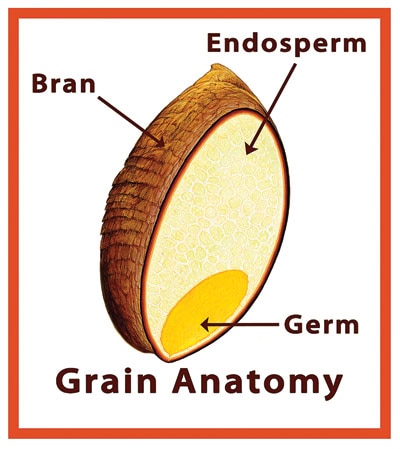Reported By: | Edited By: Sapna Vyas |Source: DNA |Updated: Dec 16, 2018, 06:40 AM IST
| Edited By: Sapna Vyas |Source: DNA |Updated: Dec 16, 2018, 06:40 AM IST
These days, you can find the label “whole grain” almost everywhere. This overused label can be confusing. Is it really a marker of a healthy product? How do you know which products actually contain true, healthy whole grains and which are just posing as health foods?
WHAT ARE WHOLE GRAINS, REALLY?
A grain is considered to be a whole grain as long as all three original parts — the bran, germ, and endosperm — are still present in the same proportions as when the grain was growing in the fields. Whole grains are grains that haven’t had their bran and germ removed. They are rich in nutrients, fiber, complex carbohydrates, magnesium, selenium and potassium. Moreover, whole grains have some valuable antioxidants not found in fruits and vegetables, as well as B vitamins, vitamin E, magnesium, iron and fiber.
 In contrast to whole grains, refined grains are grains that have had removed both the bran and germ to give them a finer texture and longer shelf life. The refining process also removes many nutrients, including fiber. Refined grains include white flour, white rice, white bread and cornflower. Most processed foods are made with refined grains. These processed foods will not keep your blood sugar levels steady, which is why you will be hungry again soon after consumption.
In contrast to whole grains, refined grains are grains that have had removed both the bran and germ to give them a finer texture and longer shelf life. The refining process also removes many nutrients, including fiber. Refined grains include white flour, white rice, white bread and cornflower. Most processed foods are made with refined grains. These processed foods will not keep your blood sugar levels steady, which is why you will be hungry again soon after consumption.
BEST WHOLE GRAINS TO EAT
These grains are worth keeping at the top of your shopping list: whole wheat, jowar, bajra, bulgur (cracked wheat), oatmeal, brown rice, buckwheat, whole-grain barley, corn, wild rice and quinoa (though quinoa is technically a seed and not a grain, it is packed with more protein than any other grain).
IDENTIFY WHOLE GRAIN PRODUCTS
- Choose foods that name one of the following whole grain ingredients first on the label’s ingredient list: brown rice, buckwheat, bulgur, millet, oatmeal, quinoa, rolled oats, whole-grain barley, whole-grain corn. whole oats, whole rye, whole wheat and wild rice.
- Foods labelled with the words — multi-grain, seven-grain, organic flour or enriched flour are usually not whole-grain products.
- Colour is not an indication of a whole grain. For instance, a brown bread isn’t necessarily whole wheat — the colour may come from added colouring.
- Read the ingredient list to see if it is a whole grain.
- Note that words like wheat, durum, and multi-grain can (and do) appear on good whole grain foods, too. None of these words alone guarantee whether a product is whole grain or refined grain, so look for the word “whole” and follow the other advice here.
CUT REFINED-GRAINS WITH 100 PER CENT WHOLE GRAIN VERSIONS
- Buy whole grain bread and avoid refined grain varieties.
- Eat whole grain oatmeal or bran flakes for breakfast.
- Replace white flour food items with whole wheat versions.
- Replace white rice with brown rice, barley or quinoa.
- Eat whole grain or whole wheat pasta instead of regular pasta.
- Be creative in cooking and mix whole grains instead of refined.
- Add cooked whole grains to your favourite salads.
- Use whole grains instead of noodles in soup.
IMPORTANT NOTE
- You do not want to add whole grains into your diet in addition to refined grains; you want to use them as healthier alternatives. Just because whole grains offer health benefits doesn’t mean your diet should be dominated by these foods. Instead, whole grains should be used to replace less healthy options.
- In general, keep whole grains to a small portion of your diet. Fruits and vegetables should take the starring role on your plate, along with high-quality proteins. Carbohydrates, including whole grains, should be eaten in moderation.

 In contrast to whole grains, refined grains are grains that have had removed both the bran and germ to give them a finer texture and longer shelf life. The refining process also removes many nutrients, including fiber. Refined grains include white flour, white rice, white bread and cornflower. Most processed foods are made with refined grains. These processed foods will not keep your blood sugar levels steady, which is why you will be hungry again soon after consumption.
In contrast to whole grains, refined grains are grains that have had removed both the bran and germ to give them a finer texture and longer shelf life. The refining process also removes many nutrients, including fiber. Refined grains include white flour, white rice, white bread and cornflower. Most processed foods are made with refined grains. These processed foods will not keep your blood sugar levels steady, which is why you will be hungry again soon after consumption.